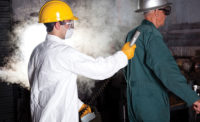(A good source for safety and health performance measures can be found in the 1995 "Resource Guide for Employee Health & Safety Program Performance Measures" published by the Chemical Manufacturers Association.)
Traditional measures: Injury and illness frequency and severity ratios do have value. They are particularly good for identifying trends. If universally and consistently applied, they also are good for comparisons with other work units or organizations. It goes without saying they are needed for OSHA compliance.
Frequency and severity ratios, however, do have some significant problems. They often lack consistency, usually due to varying interpretations of words as basic as "employee" and "injury." This is a main reason why OSHA has proposed revisions to its injury and illness recordkeeping rules.
OSHA’s changes will help, but these measurements will always be somewhat suspect in my mind. More important, I believe they are suspect in the minds of most people that they are presented to -particularly business managers and employees.
One traditional performance measure that I like a lot is the total number of employee hours worked without a lost-time injury or illness. Sure, it has some faults. But when the number reaches one million or more, it’s viewed as a very significant accomplishment, particularly by business managers and employees.
Industrial hygiene sampling results compared against legal and recommended standards are a favorite for me. I have found very few business managers or employees who have not understood and accepted these numbers.
Modern measures: Modern barometers must focus on more bottom line factors such as how many lives were saved, how many illnesses were prevented, and how much risk was reduced. Safety and health measures must also begin to be integrated with business numbers such as quality improvement, productivity growth, and return on investment. Rather than focus on what has already happened, modern and future performance measures must focus on achieving zero defects. This means conforming to requirements at all times. And these requirements must be spelled out if they are expected to be met.
The story board: The company I work for invested heavily in quality improvement several years ago. Every employee had to go through extensive quality training. Today nearly every one of our workplaces has achieved one or more quality certifications such as ISO, Q1, AQ+ and others. The company continues to pursue the highest quality levels and recognition.
An interesting transition occurred as quality improved at each work location. Ten years ago when I’d walk around one of our manufacturing operations, I couldn’t tell how well each work area was performing in regard to production and other matters. Today it’s a very different matter thanks to "story boards."
You can find a story board in just about every work unit in every one of our operations. A story board explains in simple concepts what’s happening in a certain area. When you stand and look at a story board you see many charts and graphs. The numbers clearly show the performance of that work area. Here’s the interesting point: The measures in most cases were chosen by employees working in that area. Employees seem to take great pride in how their story boards look and the message they tell. When you link all the story boards together you see how the performance for the entire operation is doing.
Safety and health performance should end up being a common measurement in all story boards -or however your company explains its performance. Safety and health measures should be more mainstream with business performance measures and not vice versa.
